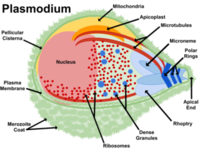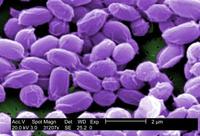-
Scientists: some diseases designated as “emerging” have been around for centuries
The Ebola, Marburg, and Lassa viruses are commonly referred to as emerging diseases, but leading scientists say these life-threatening viruses have been around for centuries; researchers say it would be more appropriate to refer to these viruses as emerging diagnoses
-
-
Global monitoring of infectious diseases in dogs and cats to protect humans
Most emerging infectious diseases of humans come from animals. International health agencies monitor these diseases, but they do so only for humans and livestock, not for companion dogs and cats; a new study recommends a global system is needed to monitor infectious diseases of companion dogs and cats
-
-
Cleanup of most contaminated U.S. groundwater sites unlikely for many decades

At least 126,000 sites across the United States have contaminated groundwater that requires remediation, and about 10 percent of these sites are considered “complex,” meaning restoration is unlikely to be achieved in the next 50 to 100 years due to technological limitations; the estimated cost of complete cleanup at these sites ranges from $110 billion to $127 billion, but the figures for both the number of sites and costs are likely underestimates
-
-
Intensive farming with a climate-friendly touch
In the world of agriculture, climate protection and intensive farming are generally assumed to be a contradiction in terms; scientists have come up with a new land development concept that could change this view; the new model is tailored to medium-sized farms in South America and sees farmers transitioning from large-scale monoculture to more diverse crop mixtures spread over smaller plots interspersed with wooded areas — a switch that can bring significant financial benefits
-
-
Indian monsoon failure more frequent with warming
Global warming could cause frequent and severe failures of the Indian summer monsoon in the next two centuries, new research suggests; the effects of these unprecedented changes would be extremely detrimental to India’s economy which relies heavily on the monsoon season to bring fresh water to the farmlands
-
-
USGS sampling water in Hurricane Sandy’s aftermath to ensure public health
Excessive nutrients in U.S. rivers, streams, and coastal areas are a major issue for water managers, because they cause algal blooms that increase costs to treat drinking water, limit recreational activities, and threaten valuable commercial and recreational fisheries; U.S. Geological Survey crews are sampling water for nutrients, sediment, and pesticides to document water quality in areas affected by the hurricane
-
-
A coal economy has multiple health, social risks, says major review
A major review of evidence on the impact of coal mining has highlighted serious, ongoing health and social problems, and an urgent need for improvements in government coal mining policy
-
-
Technology used in BioWatch could not detect pathogens, issued false alarms
The BioWatch program was created to detect the release of pathogens in the air as part of a terrorist attack, but scientists say that the program is unable to detect lethal germs because the system uses defective components; these components often set off false alarms; for example, BioWatch sensors issued fifty alarms between 2003 and 2008, but scientists and security authorities never had enough confidence in the BioWatch system to evacuate an area or take other emergency steps
-
-
New approach to a rapid treatment of malaria

Malaria causes up to three million deaths each year, predominantly afflicting vulnerable people such as children under five and pregnant women, in tropical regions of Africa, Asia, and Latin America; treatments are available for this disease, but the Plasmodium parasite is fast becoming resistant to the most common drugs; researchers have identified a new means to eradicate malaria infections by rapidly killing the blood-borne Plasmodium parasites that cause the disease
-
-
Thriving in toxic environments
Not long ago, a group claimed that these microorganisms, which live in an environment that is rich in the arsenic-based compound arsenate, could take up that arsenate and use it — instead of the phosphate on which all known life on Earth depends; the claim, since disproved, raised another question: How do organisms living with arsenate pick and choose the right substance? Scientists reveal how bacteria living in toxic environments identify and expel the poison
-
-
Cellphone data helps target likely spots for malaria control
Mosquitoes that carry malaria have a limited flight range, but that does not stop the disease from traveling long distance; humans infected with the disease can carry it anywhere a car or plane can reach; this makes eliminating the disease challenging, especially when limited resources for health care and mosquito control are available to cover a large geographic region
-
-
Researchers find anthrax can grow and reproduce in soil

Anthrax has the unexpected ability to grow and reproduce while lurking in soil — increasing the deadly bacteria’s chances to infect cattle and other mammals; researchers have found that the spores can attack a common soil and water amoeba, Acanthamoeba castellanii, turning these single-celled organisms into anthrax incubators
-
-
New Ebola antibody treatment protects monkeys from lethal disease
A new Ebola virus study resulting from a widespread scientific collaboration has shown promising preliminary results, preventing disease in infected nonhuman primates using monoclonal antibodies; the research team describes a proof-of-concept for using a “cocktail” of monoclonal antibodies, or mAbs, to prevent lethal disease in rhesus macaques; when administered one hour after infection, all animals survived; two-thirds of the animals were protected even when the treatment, known as MB-003, was administered forty-eight hours after infection
-
-
China’s Mekong River dams undermine neighbors’ economies, food production

Five Chinese dams on the Mekong River’s upper portions have caused rapid changes in water level, and other adverse effects, downstream, especially in Vietnam, Cambodia, Thailand, and Laos, where millions of people rely on the river for water, food, and transportation
-
-
Cutting food losses in half would feed an additional billion people
More efficient use of the food production chain and a decrease in the amount of food losses will dramatically help maintaining the planet’s natural resources and improve people’s lives; researchers have proved a valid estimation, for the first time, for how many people could be fed with reducing food losses
-
More headlines
The long view
A Shining Star in a Contentious Legacy: Could Marty Makary Be the Saving Grace of a Divisive Presidency?
While much of the Trump administration has sparked controversy, the FDA’s consumer-first reforms may be remembered as its brightest legacy. From AI-driven drug reviews to bans on artificial dyes, the FDA’s agenda resonates with the public in ways few Trump-era policies have.
